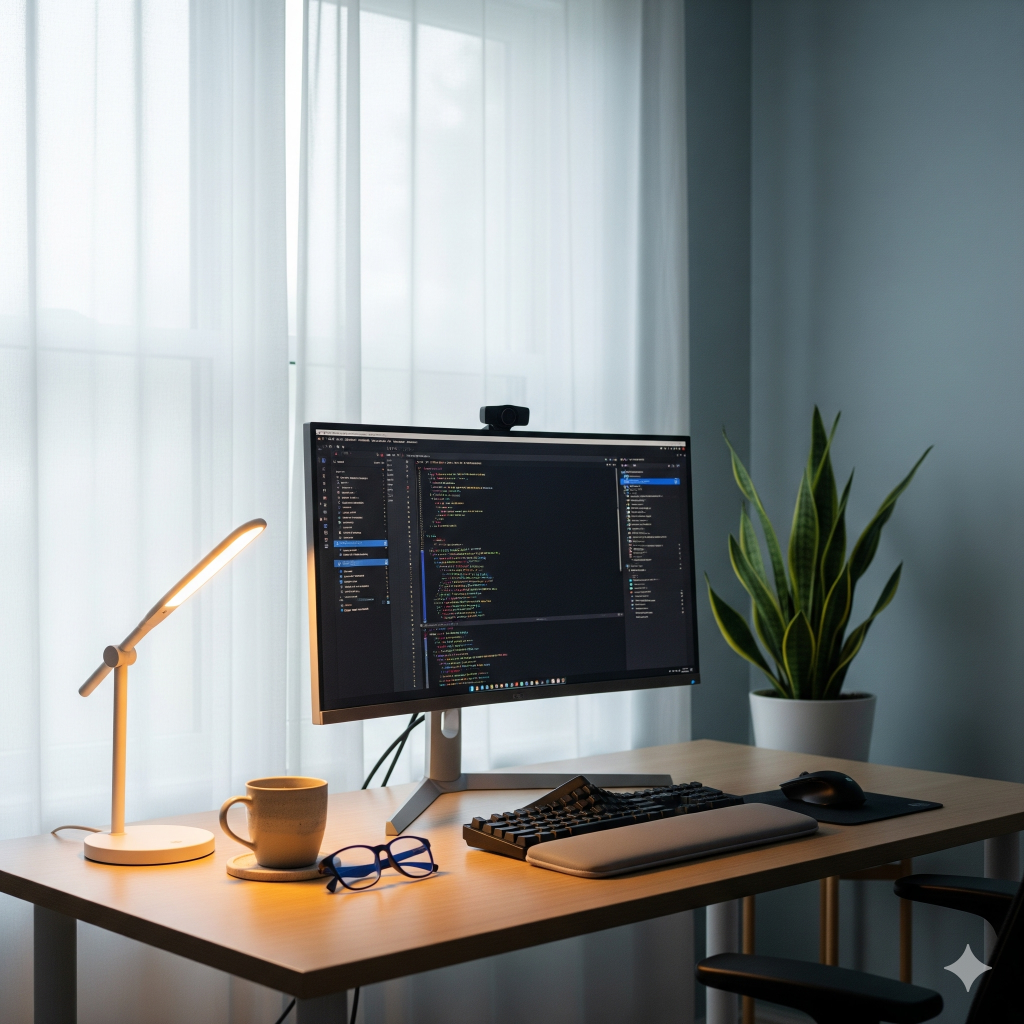
Spending long hours at a desk can put pressure on your eyes, but a few smart adjustments can make a big difference in comfort and productivity.
1. Monitor Positioning
Place your screen about an arm’s length away, with the top of the monitor at or just below eye level. Tilting the screen slightly backward further reduces glare and strain.
2. Optimize Lighting and Reduce Glare
Balance natural and artificial lighting to avoid harsh contrasts or glare. Position your monitor perpendicular to windows to prevent reflective distractions, and use soft, diffused lighting such as a warm LED desk lamp or anti glare filters if needed.
3. Use the 20 20 20 Rule
Give your eyes a break every 20 minutes by looking at an object at least 20 feet away for 20 seconds. This simple habit helps your eye muscles reset and prevents excessive strain.
4. Support Ergonomic Seating and Alignment
Ensure good posture by sitting with your feet flat on the floor and knees at a right angle. Your chair should support your lower back, and your desk setup should allow relaxed arm positioning to avoid shoulder and eye tension.
5. Calibrate Display Settings
Adjust your screen’s brightness and contrast to match your environment, making sure it is neither too bright nor too dim. Increase font size for easier readability, use high contrast color schemes, and consider blue light reduction settings or coatings for extended use.
6. Promote Moisture and Eye Hydration
Modern indoor environments often reduce natural blinking, which can result in dry eyes. Stay hydrated, blink frequently especially during long sessions, and consider using a humidifier or eye drops if needed.